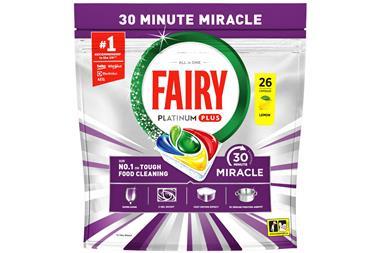Sir; I read re The devil is in EPoS detail' (The Grocer Club, September 23, p34).
This article made the point that if retailers, with limited time and space for promotional activity, are to get maximum benefit from increasingly sophisticated marketing analysis, they must put strong building blocks of data in place.
There followed an evaluation of the impact on volume generated by promotional activity across two pack sizes of the same brand, which clearly demonstrated volume increases of differing levels dependent upon the type of promotional method. A second example was given that compared the volume increases for a brand on promotion with the volume decreases of alternative brands not on promotion.
While it is indisputable that volume throughput for a product on promotion does increase and that increase is dependent upon the type and strength of the offer, the article did not address the issue of what happens to volumes before and after promotions.
Evaluating and understanding this is equally as important as the analysis of throughput during the promotion as, in my experience, some types of promotion actually have a detrimental impact on volumes after the promotion has ended.
In effect, future sales and profitability have been mortgaged for short-term gains. For example, some multibuy promotions, such as BOGOFs, encourage consumers to stock up on the product, so much so that repeat purchases, if they do occur, may take weeks or months.
In order to fully evaluate the success, or otherwise, of promotions and promotional activity, we must use the available data to analyse the position from which the product came, the effect on volumes during the promotion and, just as importantly, the effect of volumes after the promotion. Then, and only then, will we be able to fully understand the impact of promotions on sales and profitabilty.
Steve Scott
Plymouth
{{LETTERS }}
Close menu
- Home
- Retail & Wholesale
-
Products & Suppliers
- Back to parent navigation item
- Products & Suppliers
-
Product Categories:
- Back to parent navigation item
- Product Categories:
- Alcoholic drinks
- Bakery
- Cereals & breakfast
- Cheese
- Chicken & poultry
- Chocolate
- Confectionery
- Crisps, nuts & snacks
- Dairy
- Fish
- Fresh produce
- Frozen
- Household
- Meat
- Own Label
- Sauces & condiments
- Seasonal
- Soft drinks
- Vaping
- Vegan & plant-based
- World foods
- Suppliers
- People
- Reports & Data
-
Topics A-Z
- Back to parent navigation item
- Topics A-Z
-
Popular topics:
- Back to parent navigation item
- Popular topics:
- Cost of living crisis
- Crime
- Deposit Return Schemes
- Finance
- Government & Regulation
- Health
- Inflation
- Loyalty
- Marketing
- Mergers & Acquisitions
- New Product Development
- Sourcing
- Supply chain
- Sustainability & environment
- Technology
- Ultra Processed Foods
- Vaping
- A-Z all topics
- Content by type:
- Events
- Ask iA (beta)
- Subscribe now
Sign in to comment on this article
Not logged in before? Register for FREE guest access today.
You will be able to:
- Read more stories
- Receive daily newsletters
- Comment on stories
Advert













No comments yet